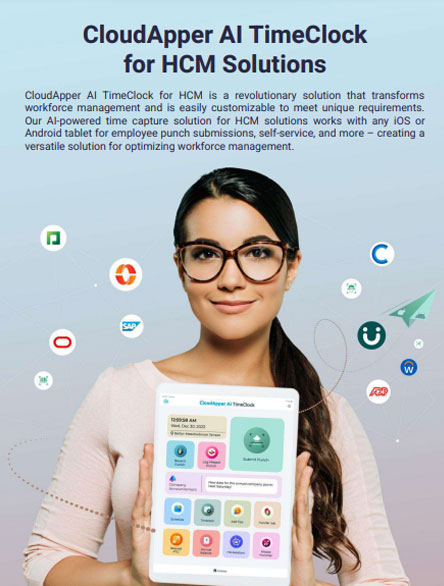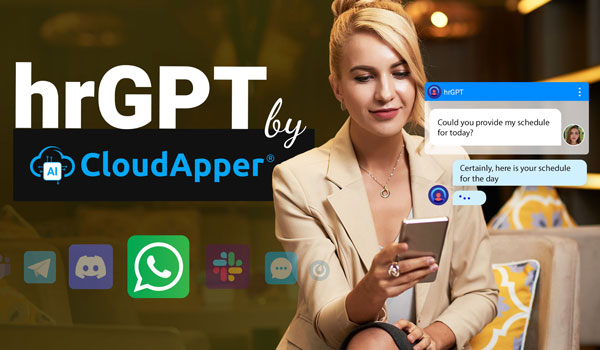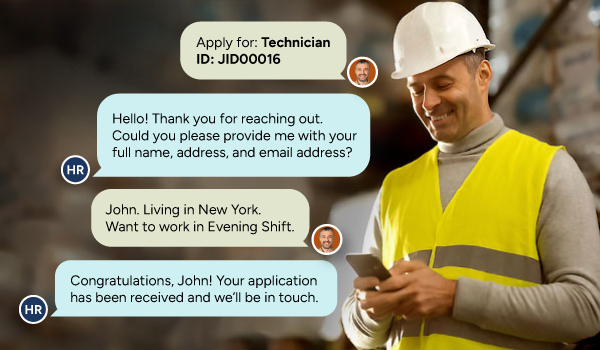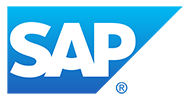Eliminate Time Theft in Oracle PeopleSoft with CloudApper’s AI TimeClock. This guide provides a step-by-step approach to deploying biometric kiosks, enrolling employees, and integrating with PeopleSoft or Fusion, reducing payroll errors and audit time.
Table of Contents
Imagine slashing payroll errors overnight and finally putting an end to buddy punching. Time Theft in Oracle PeopleSoft can quietly inflate labor costs, especially when employees share badges or enter coworkers’ IDs. Worse still, auditing those discrepancies drains HR resources and distracts from strategic work. This guide shows you how to tackle Time Theft in Oracle PeopleSoft head-on by extending your PeopleSoft or Oracle Fusion system with CloudApper’s AI TimeClock—no heavy coding required.
For more information on CloudApper AI TimeClock visit our page here.
Step 1: Deploy Your AI TimeClock Kiosks
First, choose high-traffic clock-in points—lobby entrances, break rooms, or remote job sites. Mount standard iPads or Android tablets, then install the CloudApper AI TimeClock app. These kiosks transform any tablet into a secure, biometric-enabled clock station. Because the hardware setup takes minutes per device, you can have an entire site ready in a day.
Tip: Place kiosks at eye level and in well-lit areas to optimize Face ID scanning performance.
Step 2: Enroll Employees and Define Boundaries
Next, open the hrPad admin portal and register each employee’s face, NFC badge, or QR code profile. Simultaneously, configure GPS geofences around your worksites. These digital perimeters ensure that clock-ins only succeed when an employee is physically on location. Enrollment takes less than a minute per person and supports bulk CSV uploads for large teams.
Best Practice: Kick off enrollment with a pilot group to refine your geofence radii and face-match sensitivity before rolling out company-wide.
Step 3: Configure No-Code Integration with PeopleSoft or Fusion
CloudApper’s AI TimeClock features pre-built connectors for both classic PeopleSoft and Oracle Fusion:
- Launch the Connector Wizard: Select your HCM environment and authentication method—flat-file export, REST/SOAP API, or direct database link.
- Map Data Fields: Drag and drop to align hrPad fields (employee ID, shift code, cost center) with your PeopleSoft schema. Built-in validation flags any mismatches instantly.
- Choose Sync Mode: Opt for real-time API calls if you run Oracle Fusion, or schedule nightly batch exports (CSV/XML) for on-premises PeopleSoft instances.
This process takes under an hour and requires no scripting—your IT team simply follows the guided interface.
Step 4: Pilot Your Deployment
With devices enrolled and connectors in place, run a small-scale pilot:
- Select a Test Group: Choose 10–20 employees across different roles and locations.
- Monitor Live Dashboards: Use hrPad’s admin console to watch clock-ins, geofence triggers, and sync logs in real time.
- Validate Data Accuracy: Compare hrPad timestamps against manual records in PeopleSoft to confirm error-free integration.
A one-week pilot gives you the confidence to expand, and any adjustments—like tweaking geofence boundaries—can be made on the fly.
Step 5: Company-Wide Rollout and Training
Once your pilot proves successful, scale up:
- Roll Out Additional Kiosks: Install devices at all relevant sites.
- Onboard Remaining Staff: Enroll everyone else, using quick “lunch-and-learn” sessions to demonstrate face-scan, NFC tap, and QR-scan methods.
- Provide Job Aids: Distribute one-page guides that outline the new clock-in steps and troubleshooting tips.
- Leverage Support Channels: Offer live chat or a dedicated email alias for the first two weeks to handle questions.
Hands-on training encourages adoption and prevents lingering confusion.
Step 6: Monitor, Optimize, and Report
After full deployment, maintain momentum by:
- Reviewing Analytics Weekly: hrPad’s dashboards highlight irregular patterns—like repeated failed scans—that may signal training gaps or configuration tweaks.
- Auditing Sync Logs: Ensure every timestamp flows into PeopleSoft or Fusion without errors; address any validation warnings immediately.
- Soliciting Employee Feedback: Gather frontline input on kiosk placement, scan speed, and overall ease of use to keep the process smooth.
Continuous optimization keeps your system airtight and user-friendly.
Conclusion
By following these six steps, you’ll eliminate Time Theft in Oracle PeopleSoft and gain a modern, multi-factor time-capture system—without rewriting your HCM. CloudApper’s AI TimeClock slashes payroll errors, reduces audit time by up to 75%, and delivers 100% proof against buddy punching. Best of all, its no-code integration preserves your investment in PeopleSoft or Oracle Fusion, letting you focus on driving business growth rather than wrestling with manual timesheets.
What is CloudApper AI Platform?
CloudApper AI is an advanced platform that enables organizations to integrate AI into their existing enterprise systems effortlessly, without the need for technical expertise, costly development, or upgrading the underlying infrastructure. By transforming legacy systems into AI-capable solutions, CloudApper allows companies to harness the power of Generative AI quickly and efficiently. This approach has been successfully implemented with leading systems like UKG, Workday, Oracle, Paradox, Amazon AWS Bedrock and can be applied across various industries, helping businesses enhance productivity, automate processes, and gain deeper insights without the usual complexities. With CloudApper AI, you can start experiencing the transformative benefits of AI today. Learn More

Brochure
CloudApper AI TimeClock
For accurate & touchless time capture experience.
Download Brochure
CloudApper AI Solutions for HR



- Works with








- and more.
Similar Posts

FAQs: Preventing Time Theft in Oracle PeopleSoft with CloudApper’s AI…

Stop Time Theft in Oracle PeopleSoft Using CloudApper AI TimeClock











